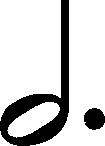



|
b. 1
|
composition: (Op. 4), Sonata in C minor, Mvt II
..
The higher value in the metronome marking is most probably due to a mistake by the EE1 engraver. Similarly, we consider the absence of the entire marking in IE to be an oversight. category imprint: Differences between sources issues: Errors in FE , Errors in EE |
||||||||
|
b. 1
|
composition: (Op. 4), Sonata in C minor, Mvt II
..
In the main text we keep the Chopinesque A notation, in which category imprint: Differences between sources issues: GE revisions |
||||||||
|
b. 1
|
composition: (Op. 4), Sonata in C minor, Mvt II
..
It is difficult to assume that Chopin would have wanted to mark the L.H. motifs in bar 1 and 3 differently, hence we consider the absence of the slur in bar 1 to be Chopin's inadvertence. category imprint: Editorial revisions |
||||||||
|
b. 2
|
composition: Op. 29, Impromptu in A♭ major
..
The mordent's sign was omitted in EE. category imprint: Differences between sources issues: Errors in EE |
||||||||
|
b. 2
|
composition: Op. 29, Impromptu in A♭ major
..
The range of crescendo is marekd in the source heterogeneously. FE and EE have slightly longer hairpins than A (→GE). We give the version which complies with the majority of analogous bars. category imprint: Differences between sources issues: Scope of dynamic hairpins |

 = 60 in
= 60 in  in bar 1 in
in bar 1 in  , Op.
, Op. 


